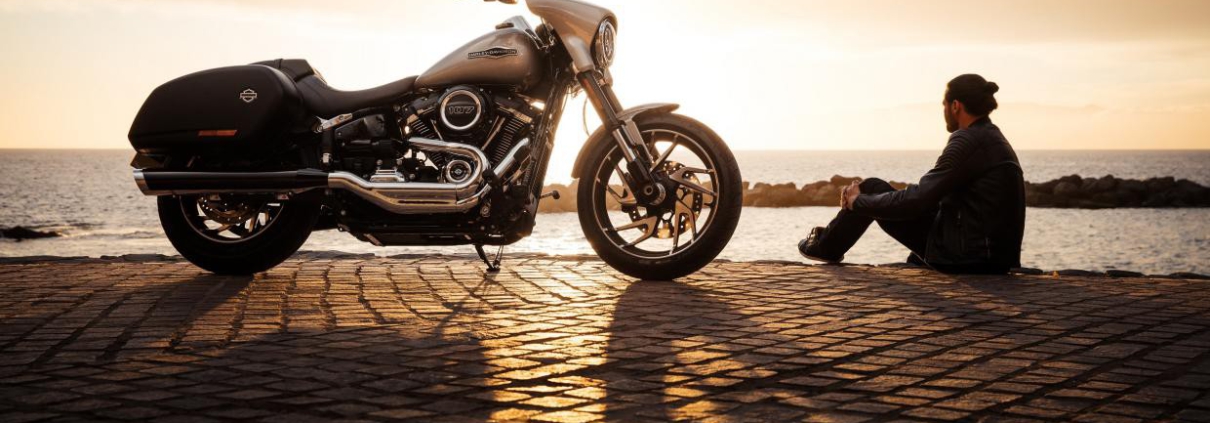Batteries for Harley Motorcycles: Choosing the Right Power for Your Ride
Few machines command the same respect on the road as a Harley-Davidson. From the deep rumble of its V-twin engine to the weight and torque of its steel frame, every Harley demands a battery that can deliver consistent power, quick starts, and long-term reliability. Yet many riders underestimate how much the right battery impacts not just performance—but also safety and ride quality.
This guide breaks down everything Harley owners and technicians need to know about selecting the best batteries for Harley motorcycles, comparing technologies, evaluating performance factors, and explaining why lithium options are becoming the modern standard.
- Why Harley Riders Care About the Right Battery
A Harley engine is built for torque, not gentle starts. It demands high cranking power and stable voltage under stress. Choosing the wrong battery—whether undersized, poorly maintained, or mismatched—can cause slow ignition, frequent replacements, and even ECU errors in newer models.
Beyond power, riders also need to consider the effects of heat, vibration, and long-term storage. A good battery isn’t just about starting your bike—it’s about ensuring every start is smooth, safe, and dependable.
- Core Battery Types for Harley Motorcycles
While Harley-Davidson has used several battery chemistries over the decades, today’s riders generally choose from three main types:
- Flooded Lead-Acid Batteries
The traditional choice—cheap and widely available. However, they require regular maintenance, can leak, and degrade faster under vibration.
- AGM (Absorbed Glass Mat) Batteries
Now standard on many factory models, AGM batteries seal the electrolyte within glass mats, making them spill-proof and vibration-resistant. They offer good cold-cranking performance but remain heavy and degrade faster if deeply discharged.
- Lithium (LiFePO₄) Batteries
Lightweight, maintenance-free, and long-lasting—these are increasingly favored among performance enthusiasts and touring riders. Lithium batteries deliver high cranking amps, stable voltage, and up to ten times the cycle life of lead-acid units.
For modern riders seeking high cranking power and reduced maintenance, a motorcycle lithium battery offers the best balance of power, reliability, and efficiency for Harley touring and cruiser models.
- Key Factors When Choosing a Harley Battery
Selecting the best battery isn’t only about chemistry—it’s about fitment, performance, and compatibility.
Cold Cranking Amps (CCA)
Harley engines, especially larger V-twins, require strong initial bursts of current. Always choose a battery that meets or exceeds your OEM CCA rating.
Battery Size & Fitment
Different Harley series (Sportster, Softail, Touring, Street Glide) have unique compartment sizes. Verify dimensions before purchasing.
Voltage Stability & Charging System
Older Harleys may have charging systems not optimized for lithium. Using a lithium-compatible charger or regulator ensures stable operation.
Environmental Resistance
For riders in hot climates or on rough roads, vibration and heat protection are vital. Lithium batteries excel here due to their sealed, compact structure.
- Why Lithium Batteries Are the Smart Upgrade
Lithium motorcycle batteries aren’t just a trend—they’re a genuine engineering evolution.
- Up to 70% lighter – Improves handling and balance, especially on touring bikes.
- Up to 10 years lifespan – Long-term cost efficiency far surpasses AGM or flooded options.
- Low self-discharge rate – Ideal for seasonal riders who store bikes during winter.
- High power density – Delivers instant torque for quick, reliable starts.
- Built-in BMS (Battery Management System) – Protects against overcharge, over-discharge, and short circuits.
To experience these benefits firsthand, explore our 12V motorcycle lithium battery series designed specifically for Harley models:
https://leochlithium.us/12v-motocycle-starts-lithium-battery-2/
- Maintenance Tips for Longer Battery Life
Even with advanced batteries, proper maintenance can significantly extend lifespan and performance:
- Check voltage monthly – Maintain between 12.8V and 13.2V for lithium models.
- Use a smart charger – Only use chargers with a lithium mode; avoid trickle chargers.
- Avoid deep discharge – Keep charge levels above 20% to prevent BMS cut-off.
- Inspect terminals regularly – Tighten and clean to prevent resistance buildup.
- Store properly – Disconnect battery during long storage and keep it in a cool, dry place.
These small habits can add years to your battery’s life and ensure your Harley fires up every time.
- Common Misconceptions About Harley Batteries
“Lithium batteries don’t work in cold weather.”
In reality, quality LiFePO₄ batteries perform well down to –20°C. A short “warm-up” (activating electronics for a few seconds) restores full cranking power.
“Higher CCA always means better performance.”
Not necessarily. A battery should match the bike’s electrical system and regulator capacity—too much CCA can cause voltage spikes.
“All lithium batteries are the same.”
LiFePO₄ chemistry (used in premium motorcycle batteries) is safer, more thermally stable, and longer-lasting than other lithium chemistries like NMC or LCO.
- Conclusion: Power, Confidence, and Control
The right battery is more than a maintenance item—it’s the foundation of your Harley’s dependability. Whether you’re cruising highways, customizing a Softail, or maintaining a full fleet, choosing a reliable power source ensures your bike performs at its best every mile.
For those seeking the optimal balance of weight, safety, and longevity, a lithium upgrade offers unmatched value. From consistent voltage to minimal maintenance, it’s a solution built for modern Harley riders who demand both tradition and innovation in one ride.
🔗 Recommended Reading
- Harley-Davidson Motorcycle Battery Replacement: Why Now Is the Time to Go Lithium
A deep dive into when and why riders should switch from lead-acid to lithium. - Understanding Harley-Davidson Motorcycle Battery Voltage: A Complete Guide for Owners and Professionals
For those who want to master the technical side of charging systems and voltage compatibility.
By understanding your Harley’s power needs and making an informed battery choice, you’ll ensure every ignition is as bold and confident as the ride itself.


